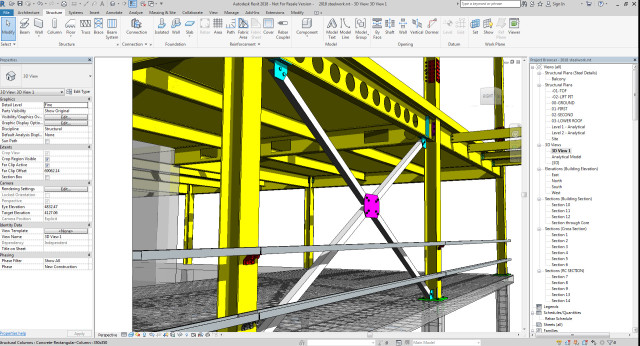

There is a large library of existing drawing styles that can modified to meet a user’s standards. The above picture is an example of an out of the box drawing styles for plates. One view per sheet or multiple, it all depends on the drawing style you select. Advance Steel has those plus it allows users to pick a drawing style that does things like grab all of the plates, members, or assemblies and pre-determines through drawing setup how they are going to be displayed and annotated. Where as in Revit we are limited to the typical plan, section, and elevation views. So that we can better understand what divides these two software’s lets get into what makes them different.Īdvance Steel is a steel fabrication documentation power house. See what I mean about that blurred line? Those are the three major similarities that typically get identified first. The tightest integration is obviously going to be with Autodesk’s Robot Structural Analysis software. These connections can also be pushed and pulled from Advance Steel through the Advance Steel Extension.īoth Advance Steel and Revit will export and import to most structural analysis software.

In 2018 this got even better, where over 130 of the Advance Steel connections can be placed through connection tool. In Revit 2017 the Steel connection tool was released where a few of the most common Advance Steel connections could be placed directly into the Revit model with the same parametric control and interface that we had in Advance Steel. Cutting the requirement to model everything twice. For purely steel layout functionality these tools are fairly evenly matched, especially since we can push and pull the data from one side to another. So, start in Revit and take your model into Advance Steel or do your work in Advance Steel and push that into Revit. Meaning if Advance Steel ends up being the steel software better suited for your work, but you are still required to deliver a Revit Structure model, the Advance Steel Extension allows us to export our Advance Steel objects and import them as Revit family objects and vice versa.

It matters less where we do our steel design because of the Advance Steel Extension in Revit. I often encounter users who ask: Which one do I use? Do I need both? What are the differences? The quick answer is level of detail you need, but I want to get a bit deeper into the specifics that separate these steel design packages.īefore we jump into the differences, I first want to talk about some of the similarities.Ī Revit structure model is a common deliverable requirement for clients. With the addition of the Advance Steel connections in Revit, the line between the two software’s have become even more blurred.


 0 kommentar(er)
0 kommentar(er)
